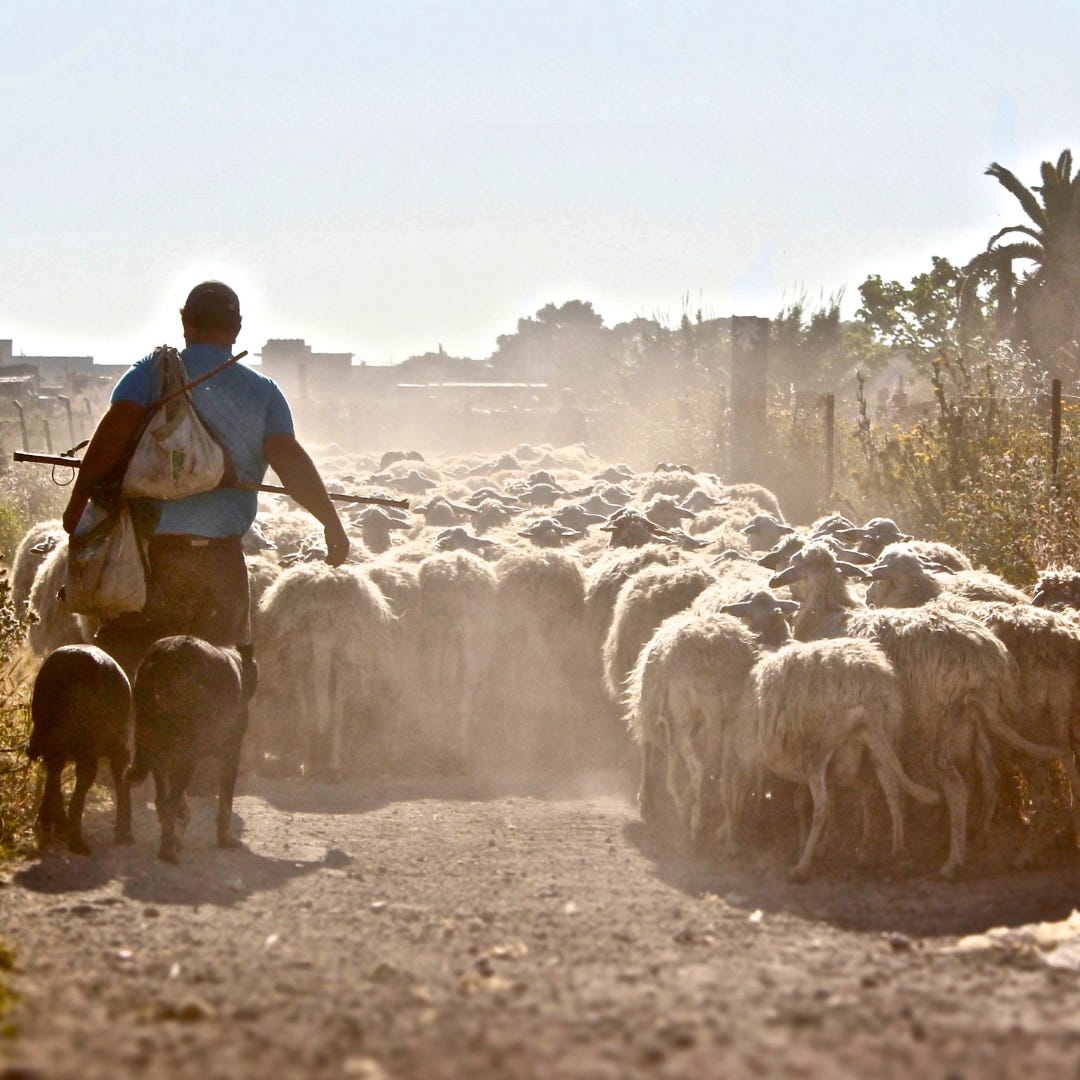Shepherds' Paths & Ancient Internets
Reflections on the pathways that have long connected humanity

To the South of Rome lies an 1800-mile network of shepherds’ paths called i tratturi. I found out about it by following the dogs.
By which I mean, researching the dogs who walked alongside Italic shepherds a millennia before the Romans and Greeks arrived.
The dogs were (and are today) the Maremmano-Abruzzese sheepdogs, great white mastiffs whose roots lie in Central Asia. The Italic shepherds were both those of the Indo-European and older local tribes.
When you read about the Italian South in the Greco-Roman eras, you will see she is described as difficult to penetrate. This is the view of outsiders. Of Romans, Greeks, and ancient scholars who experienced the region’s thick interior mountains as barriers that frustrated their efforts to embed their civilizations.
To resident tribes like the Lucani, the Bruttii and the Samnites, the experience was quite different. While undoubtedly challenging, the mountains did not leave the tribes isolated. I tratturi, which crisscrosses much of the interior, kept the tribes well-connected.
This web of pathways carried not only shepherds and sheep but also travelers, traders, thieves, news, rumors, language, hand gestures, goods, and ideas.
In other words, i tratturi was the internet of its time and place.

Around the world, many such ancient internets exist and take many shapes. Yoruban talking drums. Chinese smoke signals. Carthaginian carrier pigeons.
And, of course, countless routes over land and sea used for trade, long-distance communication, military campaigns, seasonal migrations, and spiritual journeying.
Along these pathways, nodes of exchange pop up. Nodes like port cities, marketplaces, village centers, fortresses, watering holes, and holy places.
The human world has long been connected by webs of multi-directional exchange.
Wherever your lineages hail from, you come from people who created, adapted, and utilized ancient internets.
Along these systems, they sent messages, objects, ideas, skills, people, animals, plants, food, weapons, medicines, news, rumors, philosophies, languages, worldviews, spiritualities and stories.
What shapes do the ancient internets of your lineages take?



